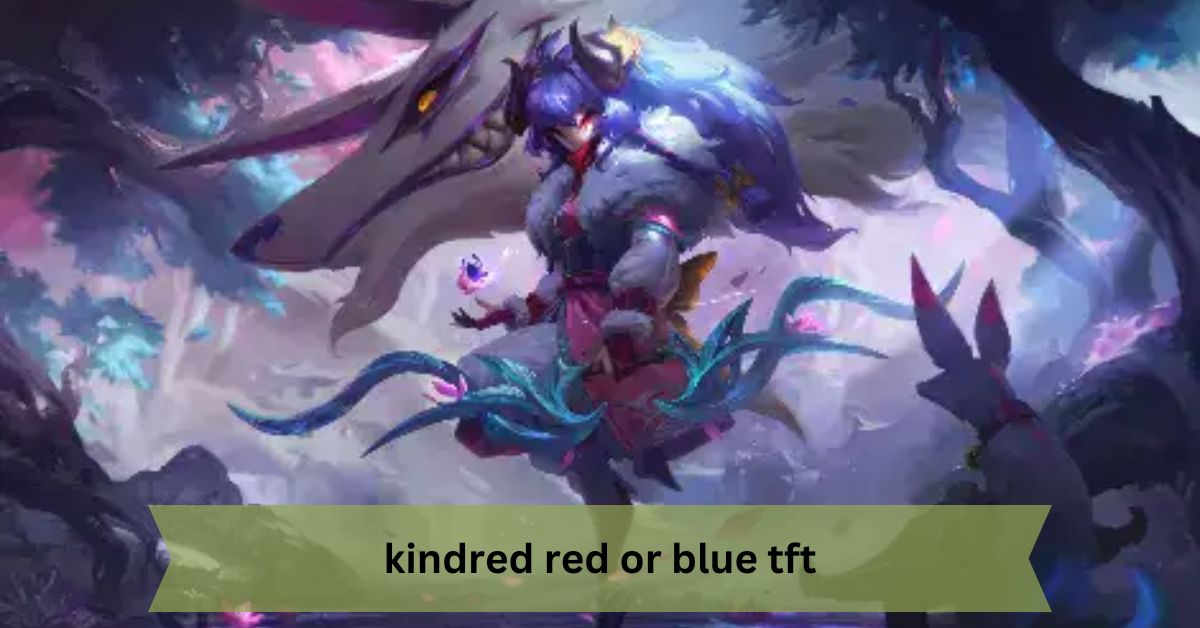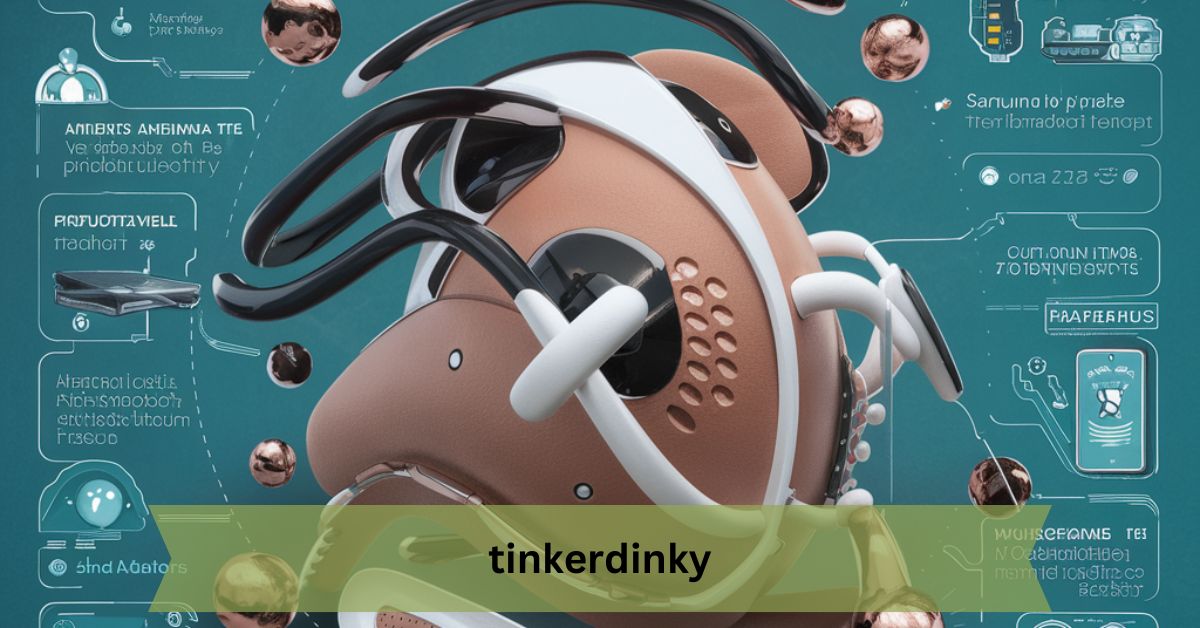Teamfight Tactics (TFT) is a game where strategy meets adaptability. One of the most interesting champions in TFT is Kindred, who can either follow the “Red” path or the “Blue” path, each offering distinct advantages.
Deciding whether to go “Kindred Red or Blue TFT” can be challenging, but it’s essential for optimizing your team’s performance. In this article, we’ll break down everything you need to know about both paths, including key factors, playstyle strategies, item choices, and which scenarios suit each build.
By the end, you’ll have a clear understanding of how to make the right decision when it comes to “Kindred Red or Blue TFT.”
What is Kindred in TFT?
Kindred is a versatile champion in TFT with a kit that offers both damage and survivability. In the game, Kindred is typically associated with the Ranger class and possesses the ability to deal significant damage while protecting themselves and allies with their ultimate ability, “Lamb’s Respite.”
Kindred’s ultimate ability creates a safe zone on the battlefield, allowing units within it to avoid death temporarily. This makes Kindred a crucial champion in many late-game situations, as they provide both offensive firepower and defensive utility.
Kindred Red or Blue: An Overview
When deciding between “Kindred Red or Blue TFT,” the key difference lies in the items you equip and the role you want Kindred to play in your team composition.
- Red Kindred focuses on maximizing damage output. This build prioritizes attack damage (AD) and critical hits, making Kindred a powerful damage dealer.
- Blue Kindred emphasizes utility and survivability. This build prioritizes ability power (AP) and mana regeneration, allowing Kindred to use their ultimate ability more frequently and offer more protection to the team.
Both builds can be effective, but the choice between Red and Blue Kindred depends on your team composition, the items available, and your strategy for the game.
Key Factors in Choosing Between Red or Blue Kindred
1. Team Composition
- Red Kindred works best in team compositions that require a primary or secondary damage dealer. If your team lacks raw damage output and needs a strong backline carry, Red Kindred can fill that role effectively. They thrive in teams that prioritize high burst damage and fast takedowns.
- Blue Kindred excels in teams that prioritize survivability and utility. If your team has other strong damage dealers but lacks protection or sustain in the late game, Blue Kindred can help by frequently activating Lamb’s Respite and keeping your team alive during critical moments.
2. Item Availability
- Red Kindred benefits most from items that enhance their attack damage and critical hit potential. Some of the best items for Red Kindred include Infinity Edge, Guinsoo’s Rageblade, and Rapid Firecannon. These items maximize Kindred’s attack power and allow them to deal significant burst damage.
- Blue Kindred needs items that boost their ability power and mana regeneration. Key items for Blue Kindred include Spear of Shojin, Seraph’s Embrace, and Blue Buff. These items reduce the cooldown of their ultimate and ensure that Kindred can repeatedly activate Lamb’s Respite during extended fights.
3. Game Phase
- Red Kindred shines in the mid to late game when you need to secure quick kills and break through the enemy’s frontline. Their damage output scales well with the right items, making them a lethal threat in the late game.
- Blue Kindred is more effective in the late game, particularly in prolonged battles where survival is more critical than damage. They can keep your team alive during dangerous moments, turning the tide of battle in your favor.
Red Kindred: Playstyle, Strengths, and Weaknesses
Playstyle
As a Red Kindred, your primary focus is to maximize damage output. You’ll want to position Kindred in the backline, away from enemy threats, and equip them with items that enhance their attack damage and critical hit chance. The goal is to deal significant damage as quickly as possible, eliminating key threats before they can engage your team.
Strengths
- High Damage Output: Red Kindred can deal massive amounts of damage, especially with items like Infinity Edge and Guinsoo’s Rageblade. They excel at taking down tanks and high-priority targets.
- Strong in Burst Scenarios: Red Kindred’s ability to burst down enemies quickly makes them a potent force in the mid to late game.
- Snowball Potential: With the right items and positioning, Red Kindred can quickly snowball, becoming an unstoppable force on the battlefield.
Weaknesses
- Vulnerable to Assassins: Red Kindred is vulnerable to assassins and champions that can quickly dive into the backline. Without proper protection, they can be eliminated before they can deal damage.
- Reliant on Items: Red Kindred’s effectiveness is heavily dependent on having the right items. Without key items, their damage output will fall short of expectations.
Blue Kindred: Playstyle, Strengths, and Weaknesses
Playstyle
Blue Kindred focuses more on utility and survivability. Instead of maximizing damage, you’ll want to ensure that Kindred can activate their ultimate ability as frequently as possible.
Position Kindred in a safe spot where they can protect both themselves and their teammates with Lamb’s Respite. The focus is on sustaining your team during long battles and preventing key units from being eliminated.
Strengths
- High Utility: Blue Kindred provides immense utility through their ultimate ability, which can save your entire team from certain death. This makes them incredibly valuable in extended fights.
- Sustainability: Blue Kindred can sustain your team through difficult engagements, allowing your other champions to survive longer and deal more damage over time.
- Control in Late Game: In the late game, Blue Kindred’s ability to control the battlefield with Lamb’s Respite can be the difference between victory and defeat.
Weaknesses
- Lower Damage Output: Blue Kindred sacrifices damage for utility, meaning they won’t contribute as much to your team’s overall damage output. This can be a disadvantage if your team lacks other strong damage dealers.
- Dependent on Team: Blue Kindred is highly dependent on their team to deal damage and secure kills. If the rest of your team falls short, Blue Kindred won’t be able to carry the game alone.
When to Choose Red Kindred
Choosing Red Kindred is ideal in the following scenarios:
- You Need a Damage Dealer: If your team composition lacks a strong backline damage dealer, Red Kindred can step up and fill that role.
- You Have the Right Items: If you have access to critical hit and attack speed items like Infinity Edge, Guinsoo’s Rageblade, or Rapid Firecannon, Red Kindred can maximize their damage potential.
- Enemy Team is Squishy: Red Kindred excels against teams that lack tanky frontlines. They can quickly burst down squishier targets and dominate the battlefield.
When to Choose Blue Kindred
Opt for Blue Kindred in the following situations:
- You Need More Utility: If your team has plenty of damage but lacks survivability or sustain in late-game fights, Blue Kindred can provide much-needed utility through their ultimate ability.
- You Have the Right Items: If you have access to mana and ability power items like Blue Buff, Spear of Shojin, or Seraph’s Embrace, Blue Kindred can maximize their utility and keep your team alive.
- Enemy Team is Strong in Burst Damage: Blue Kindred is a great counter to teams that rely on burst damage. By activating Lamb’s Respite at the right moment, they can protect your team from being wiped out in an instant.
Item Recommendations for Kindred Red or Blue TFT
Red Kindred
- Infinity Edge: Increases critical strike chance and amplifies critical hit damage, making Red Kindred a powerful force.
- Guinsoo’s Rageblade: Increases attack speed with each attack, allowing Kindred to dish out damage quickly and efficiently.
- Rapid Firecannon: Increases attack range and attack speed, keeping Red Kindred safe in the backline while maintaining their damage output.
Blue Kindred
- Blue Buff: Reduces mana cost and increases the frequency of ultimate ability usage, allowing Blue Kindred to activate Lamb’s Respite more often.
- Spear of Shojin: Restores mana after each attack, further reducing the cooldown of Kindred’s ultimate.
- Seraph’s Embrace: Provides additional mana, ensuring that Blue Kindred can consistently use their abilities to protect the team.
Frequently Asked Questions
1. Which is better, Red or Blue Kindred in TFT?
There is no definitive answer to which is better between Red and Blue Kindred. It depends on your team composition, item availability, and the stage of the game. Red Kindred is better for damage-heavy team compositions, while Blue Kindred excels in utility and survivability.
2. What items are best for Red Kindred in TFT?
The best items for Red Kindred are those that enhance attack damage and critical hit chance. Items like Infinity Edge, Guinsoo’s Rageblade, and Rapid Firecannon are ideal for maximizing damage output.
3. What items are best for Blue Kindred in TFT?
The best items for Blue Kindred are those that boost mana regeneration and ability power. Blue Buff, Spear of Shojin, and Seraph’s Embrace are great choices to help Kindred use their ultimate ability more frequently.
4. When should I choose Blue Kindred over Red Kindred?
You should choose Blue Kindred when your team needs more utility and survivability. If you already have strong damage dealers but lack protection in late-game fights, Blue Kindred can provide valuable support through their ultimate ability.
Conclusion
In TFT, choosing between Red or Blue Kindred depends on your team’s needs—Red for maximum damage output and Blue for survivability and utility. Both builds are powerful in the right situations, so adapt based on your team composition and available items. With the right strategy, Kindred can be a game-changer for your success.



